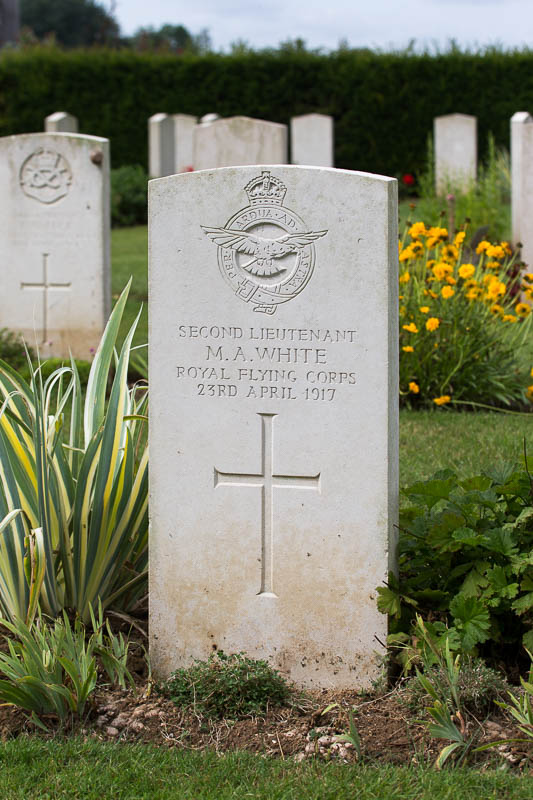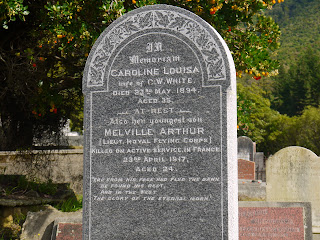Melville White's occupation on enlistment is given in his record as "Civil Servant" - he worked for the Post and Telegraph Department in Wellington. He joined the army on August 11, 1914, the beginning of the Great War. His administration skill saw him attached to the HQ Staff of the New Zealand Expeditionary Force as a superintending clerk of the Quartermaster-General's branch with the rank of Sergeant. He went to Gallipoli with the army and was active in the evacuation phase of the battle.
He went to England with the NZEF administration branch and it was there that he was selected for an RFC Commission.
"The undermentioned to be temp. Lts. whilst serving with the RFC. 1st Aug. 1916.
Staff Serjt. -Maj. Melville Arthur White, from New Zealand Exp. Force." -The London Gazette, 5/9/1916.
Melville White joined 24 Squadron under the famed Lanoe Hawker, VC, the third pilot to win the Victoria Cross, for shooting down three enemy planes in a single sortie with a machine gun set at a 45 degree angle from his fuselage in order to clear his propellor. He, in his turn, was shot down and killed by Manfred von Richthofen, the German's 11th victory.
24 Squadron, RFC, was the first all-fighter squadron in the Corps. It was equipped with Britain's first single seat fighter plane with a forward-firing machine gun, the pusher-engined de Havilland Dh-2. It was top of the line when introduce but soon became obsolete when the German Air Service introduced a faster plane with two machine guns - the Albatros D-III.
 |
| AirCo de Havilland Dh-2. Wikipedia photo. |
I have been unable to find records of Melville White's flying career. I can not say how long he was with 24 Squadron or whether he saw much action. It was customary in service squadrons to train new pilots in action, doing their best to protect them until they had learned the skills needed to survive in a hostile sky. In Melville's case, he may not have learned them. This account of his death is reported by the airwar19141918 site - I do not know the original source: "Elsewhere the British were not so lucky losing 8 crew including Lieutenant Eric Arthur Barltrop and 2nd Lieutenant Fergus O’Sullivan from 22 Squadron in FE2b 6929 who collided with 2nd Lieutenant Melville Arthur White from 24 Squadron in DH2 7909. Both aircraft broke into pieces and crashed."
A further search finds what might have been an eye witness to the fatal collision. The official record of the day show a Flight Sub-Lieutenant H S Kerby, of 3 Naval Squadron, witnessing: "Albatros Scout crashed Le Pave at 17:30/18:30; collided with another Albatros."
Australian R Gannon, on "theaerodrome" forum suggests: "As to the two seen to collide by FSL Kerby, this was well south of main action and the pair were flying side by side 2,000ft below; FSL Kerby reported that one, '...attempted to warn other by crossing over him. While doing this the 2 HA collided, the undercarriage of the upper crashing into wing of the lower - both machines went down crashing through the sky.' Despite him calling them Halberstadts I have a nagging suspicion he may have witnessed the collision of 22 Sqn's 6029 & 24 Sqn's 7909."
"The Katipo," the official journal of the P&T Department, described him in their obituary as "a young man of sterling character, who enjoyed the confidence of his superiors and the regard of his comrades and friends, all of whom will greatly regret his loss and the premature close of such a promising career."
 |
| Jeancourt Cemetery, France. NZ War Graves Project photo. |
 |
| Picton Cemetery. |
No comments:
Post a Comment